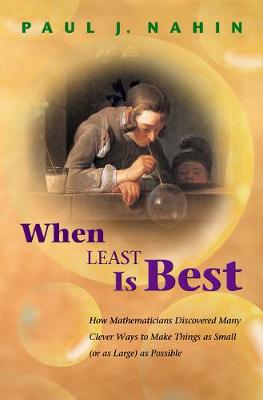What is the best way to photograph a speeding bullet? Why does light move through glass in the least amount of time possible? How can lost hikers find their way out of a forest? What will rainbows look like in the future? Why do soap bubbles have a shape that gives them the least area? By combining the mathematical history of extrema with contemporary examples, Paul J. Nahin answers these intriguing questions and more in this engaging and witty volume. He shows how life often works at the extremes - with values becoming as small (or as large) as possible - and how mathematicians over the centuries have struggled to calculate these problems of minima and maxima. From medieval writings to the development of modern calculus to the current field of optimization, Nahin tells the story of Dido's problem, Fermat and Descartes, Torricelli, Bishop Berkeley, Goldschmidt, and more. Along the way, he explores how to build the shortest bridge possible between two towns, how to shop for garbage bags, how to vary speed during a race, and how to make the perfect basketball shot.
Written in a conversational tone and requiring only an early undergraduate level of mathematical knowledge, "When Least Is Best" is full of fascinating examples and ready-to-try-at-home experiments. This is the first book on optimization written for a wide audience, and math enthusiasts of all backgrounds will delight in its lively topics.
- ISBN13 9781400841363
- Publish Date 1 January 2007 (first published 14 December 2003)
- Publish Status Active
- Publish Country US
- Imprint Princeton University Press
- Format eBook
- Pages 392
- Language English
- URL http://degruyter.com/search?f_0=isbnissn&q_0=9781400841363&searchTitles=true
